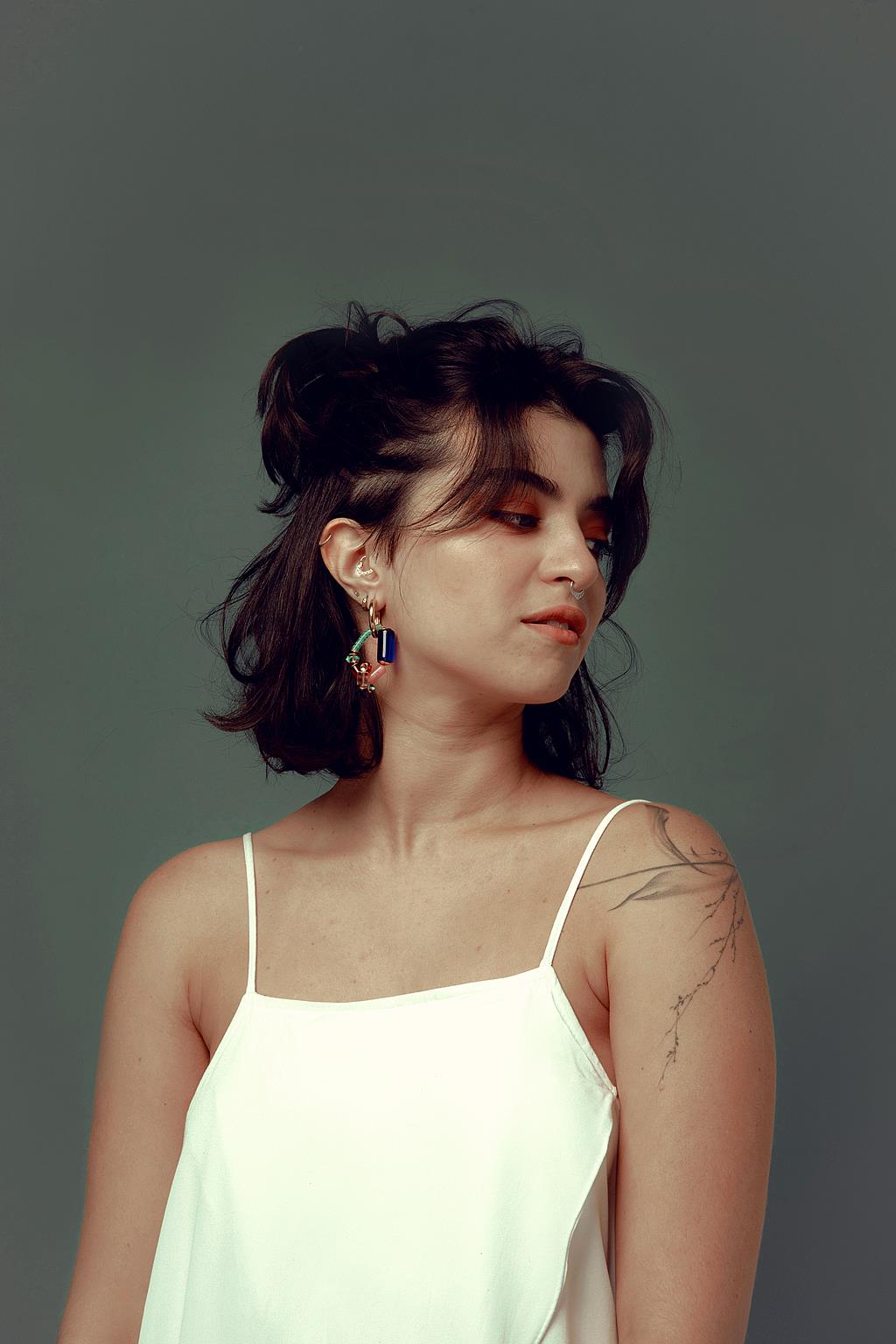Singer and songwriter Nina Camillo presents her debut EP, “Nascente,” a work that summarizes her musical and personal journey. With six original tracks, the project moves between neo soul , jazz and influences from Brazilian music, reflecting her artistic evolution. Fully involved in the creative process – from composition to arrangements –, Nina ends a cycle of experimentation and maturation with songs that explore everything from her relationship with music to themes such as self-discovery and love. The EP’s visual identity, signed by Isabella Pina, reinforces the idea of collage, symbolizing the different phases that culminated in this release.
Your EP Nascente symbolizes the end of a cycle of experimentation and growth. What was it like for you to revisit these different stages of your journey while working on this project?
For me, it was a natural and unplanned process. I started producing the tracks without really envisioning where I would go. It was something that happened naturally as part of my musical studies, which formally began in 2019. Since then, I have been questioning and exploring my language when composing, and eventually when producing. It turned out that between composition and release, things took a long time and changed a lot, but I feel like I am a different person now. Going through this EP transformed me as an artist and made me see how this (composition) is completely spread throughout my life.
You mention inspirations like Hiatus Kaiyote , Erykah Badu and Brazilian jazz. How did these references help shape Nascente’s unique sound?
I think that when you compose and have this calling, it is natural that some musical style that you listen to influences you, or even mixes with another admired one that is also contrasting. Brazilian music itself has greatly influenced these international artists that I like, like Hiatus , so I think that I am just part of this ‘back and forth’ of globalization in music. Between harmony and studio sound, recording and mixing, these artists that I always mention were essential in the formation of this language, even though I have my own style.

Your compositions explore themes of overcoming judgment and self-discovery. Which of these tracks challenged you most emotionally during creation and why?
I think it’s definitely “Sobre Fugir” (About Running Away). I have a very strong tendency towards self-sabotage and this song has lyrics that I find very difficult and uncomfortable to sing. I recorded it about three different times, and even today, I think it really irritates me when I sing it, because it was written in a therapeutic way that I don’t always embrace in my daily life. Thinking that music is like a tattoo and it just exists out there, this one is like a kind of affection that I don’t always like to receive (laughs). It’s a very dual song in that sense for me, it challenges me, and I think that’s why it’s at the end of the EP, I believe in its message, even though it turns me upside down inside.
The EP’s cover art reflects the concept of collage, connecting distinct moments in your life. How does this visual aesthetic relate to the musical narrative you wanted to tell?
That’s exactly it, right? The tracks were recorded at very different times, even the instruments themselves within a single track. If I were to find the lead vocals for Flor da Pele, I think it would sound like someone else singing, because my voice has changed a lot since then. That’s what this project was, an experiment full of fears and anxieties, the cover is that, it’s that process.

Some songs were recorded during the pandemic, while others came later. How did this contrast of contexts influence the creative process and the messages of the EP?
It had a big influence, even though it was part of the same flow of experimentation and discovery. Vem Pro Céu and Flor da Pele came right after a huge involvement with neo soul , while Bem Te Vi is a bridge to something more Brazilian, and all the following songs already have this mix, even if they tend towards one side. When recording Só Dá Você, Noa ( bassist) commented that the track reminded me a lot of Djavan’s “Curumin”, and indeed, it must even be in the same tone, but I had never heard it before, and then I got really hooked. But there is indeed a difference between the harmonies and the density of the lyrics.
Tracks like “Flor da Pele” and “Vem Pro Céu” explore a lighter, healthier kind of love. What inspired you to address this side of love and how do you see this representation in your songs?
I call these songs “gum sugar”. They are light, pleasant and innocent, just like I was at the time. In my later works, there is a wave of depression and chaos (laughs) that I experienced later. But I think it’s nice, it marked a phase of the beginning of my love life and that was very good, after all, I wrote it just as a reflection of what I was experiencing.
You mentioned that creating Nascente was a process of facing fears and growing with music. What was the biggest lesson this project taught you as an artist and a person?
I think that understanding that things have a beginning, middle and end. That I can accomplish something until the end, even with turbulence along the way. That’s what I’m trying to keep in mind now, and understanding how I can do all of this in a more concise and planned way from now on, that I am indeed capable of.
Follow Nina Camillo on Instagram





